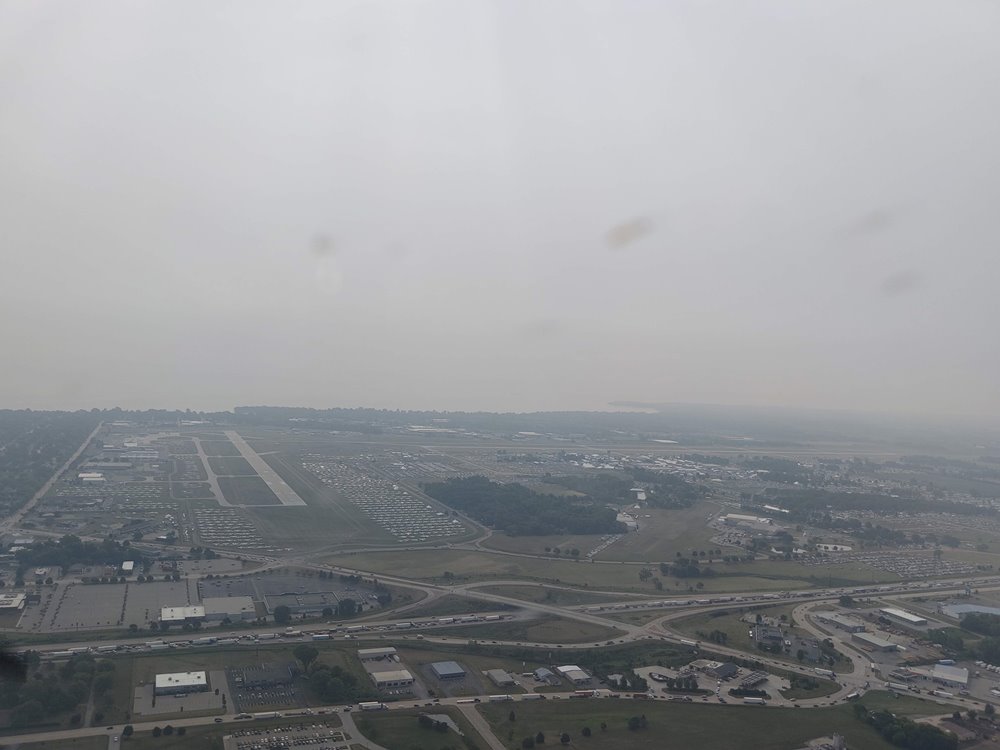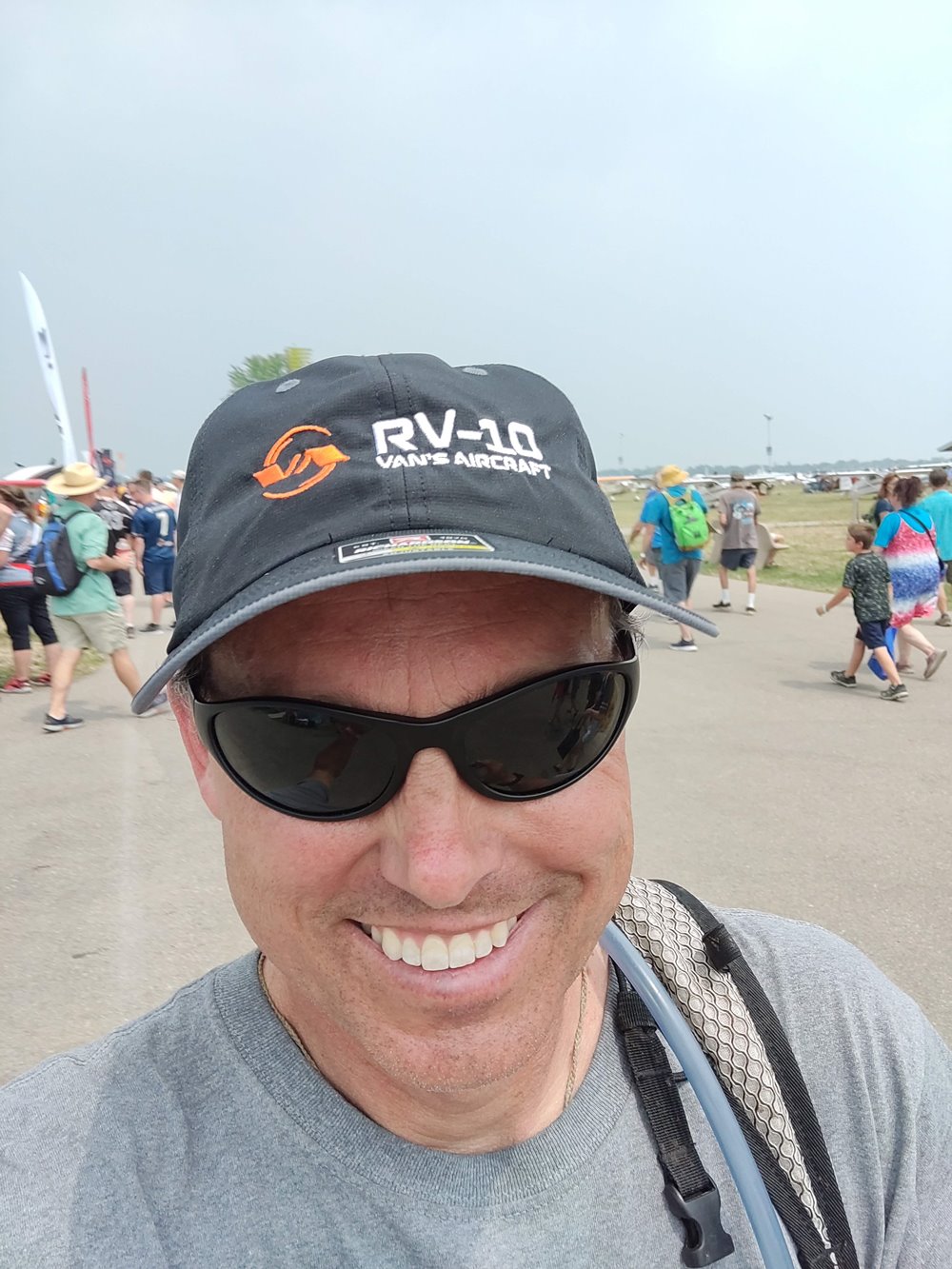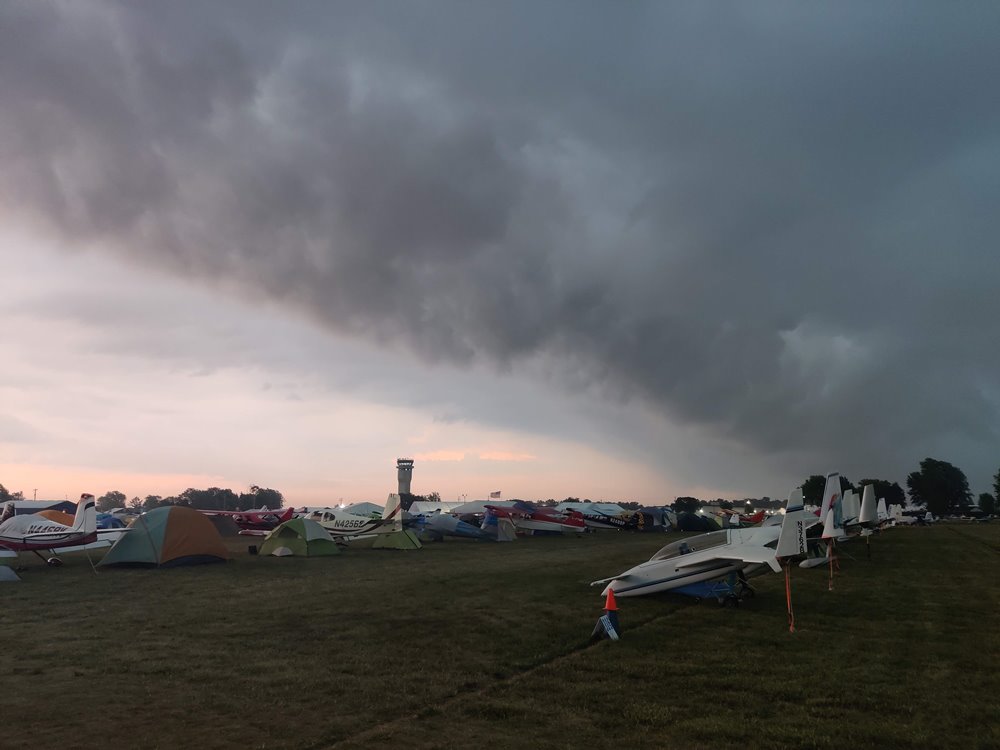Another interesting and fun year at AirVenture, punctuated with beer, learning, and soaking up the experience with like-minded folks. Speaking of learning, thanks to DanH for his training on the Spotted Cow tap and for organizing another great evening with RV builders. Now on to what else I learned:
Vic Syracuse (Base Leg Aviation)
I ran into Vic while he was hanging out in front of his Hummingbird helicopter. Nice to catch him when not surrounded with people pining for his attention.
1. After fueling up on restart, my engine would run rough from boiling fuel. Advice from Vic: A. Be sure to open oil door when fueling B. The key is to keep the electric fuel pump running. The mechanical fuel pump does not generate enough pressure when the fuel is boiling
2. During my condition inspection I checked the nose gear for play. The gear pucks were tight but there was a small amount of play I could feel (but couldn’t visible notice) making me concerned about the bronze bushings. Vic asked how many hours (300+) and then said to not worry about it.
EI commander (Bill)
While there isn’t currently a version of the EI Commander for 6 cylinder Pmags, Bill was a great source of general information about running Pmags and electronic ignitions in general. Some work has been done on the 6 cylinder version but development is low priority. After seeing all that Bill’s unit can do and detect, I’ll be an early adopter when it is available.
The key take-aways from Bill’s presentation:
1. Max advance of 6 degrees, but 5 degrees is recommended
2. Key to timing it keeping CHT at a safe temperature
3. There is nothing wrong with exceeding 400 degrees on climb out, Bill feels under 425 is perfectly fine
4. Set spark plugs to the minimum size – this will help with high altitude operations and the plugs will open up over time
5. Change your plugs every 125 hours, in his testing for failures it was not the electrodes that fail but the insulator (and that cannot be visibly checked)
6. 92/93 octane premium mogas okay on Lycoming engines running 8.5:1 compression
P-Mag (Brad and Trent)
After being the guineapig who found firmware (FW) version 57 was dangerously unusable and then the guineapig for FW58 I was anxious to talk with them to find out if there were any newer versions. Thankfully this appears to be a stable version, and is what they are shipping to Lycoming for builders choosing the PMag option.
I have felt FW58 was not as good at FW54, so I sat down and spend time talking with Trent. First, he expressed that he gets nearly zero feedback on what timing settings users of the 6 cylinder Pmag are using and that it would be very helpful for people to send him this data. PLEASE CONSIDER EMAILING HIM YOUR SETTINGS AND FEEDBACK (email: info@emagair.com).
In discussing timing, Trent advises to not advance more than 6 degrees (even though the default is 9 degrees). I’m going to experiment with 23 degrees (min) and 28 degrees (max) (I’m currently set to 23 and 29 degrees, more information on setting Pmags: Link).
Vertical Power
After a post from G3Xpert on VAF about displaying a Flap Extension speed warning if the airspeed was too high I was interested in my options since I use the VPX Pro to handle the flap motor and position sensor. Talking when the Vertical Power guys, they reminded me that the VPX Pro has a setting that will prevent flap extension if the airspeed is above the programmed limit.
Colorado Mountain Flying (Bill Standerfer)
I live in the Colorado mountains so I frequently fly in the mountains but I always want to learn more. This was a general seminar but a couple take aways:
1. I lean for take off but just put it where it looked about right. Bill recommends a full power run up, lean to peak and then set mixture for take off to 100 ROP. Totally makes sense, not sure why I didn’t figure out this on my own, then again I’m not sure I have ever done a full power run-up.
2. A line of clouds not moving indicates severe turbulence, not new for me but I wanted to share.



No Comments